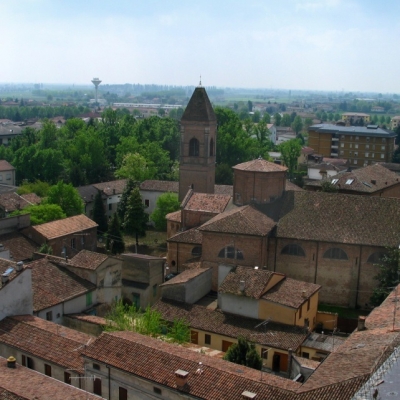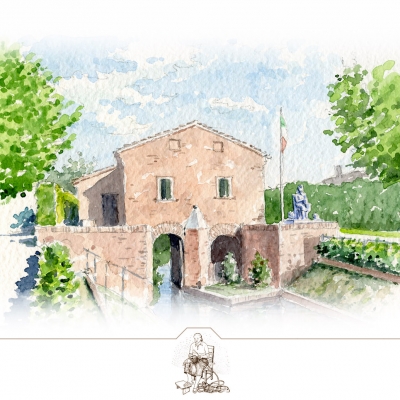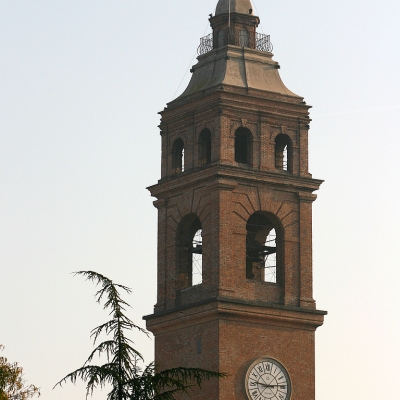Macina Palace
The old Gonzaga palace was built around 1481. Originally - with its auxiliary buildings - it occupied the entire area south of the Luzzara Castle, between the Parish church and the actual seat of the Town Hall. The war culminating in the battle that took place on August 15, 1702, though, caused the destruction of part of the building. After the Gonzaga, it served as a Public Palace for centuries, and then it was abandoned until the Unification of Italy.
Its name derives from the milled-cereal tax - which was levied in the palace during the 18th century. In 1952, it was bought by the Luzzarese curia, thus becoming a Parish property. Inside the palace, it is still possible to admire the loggia overlooking the courtyard - consisting of a porch with three open and semicircular arches supported by columns - now walled. The two central marble columns are characterized by richly decorated capitals, whereas the two masonry columns have marble capitals with a much simpler leaf motif. On its front - above the main door - stands the Gonzaga polychrome ceramic coat of arms, by Luca della Robbia. In the upper floors, some traces of frescoes - once completed by wooden ceilings - are still visible.




